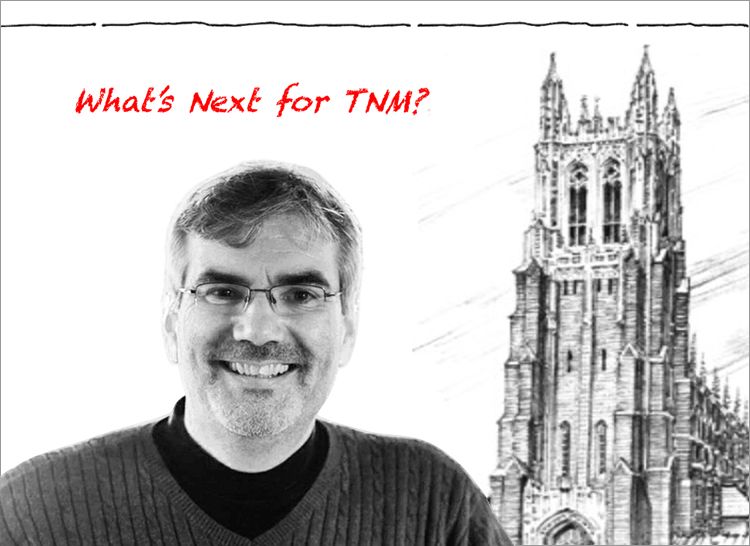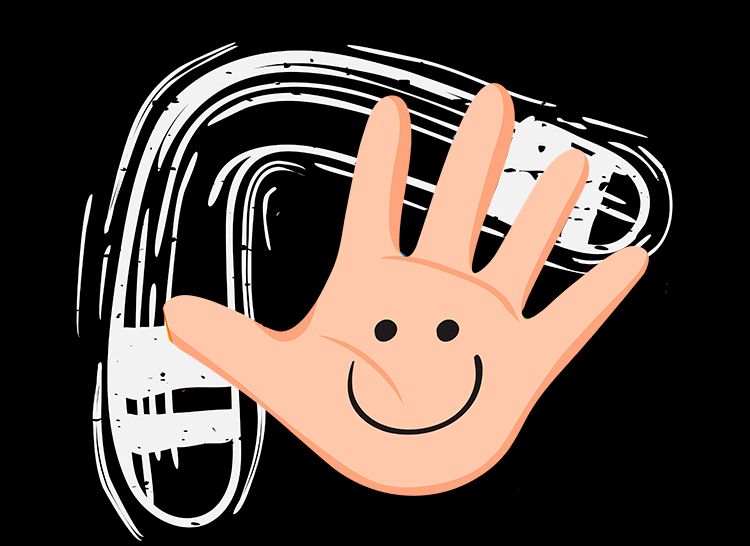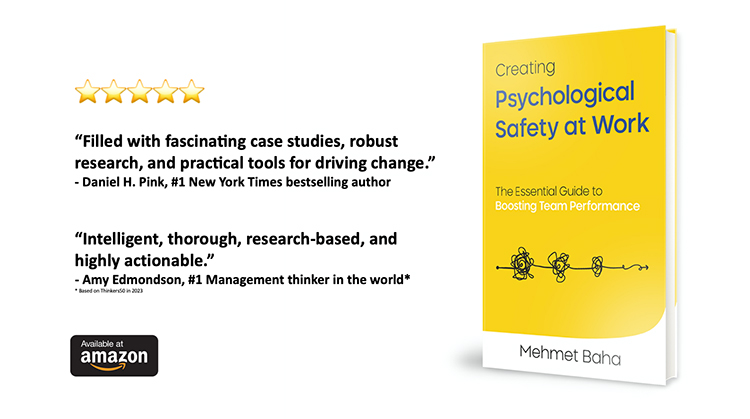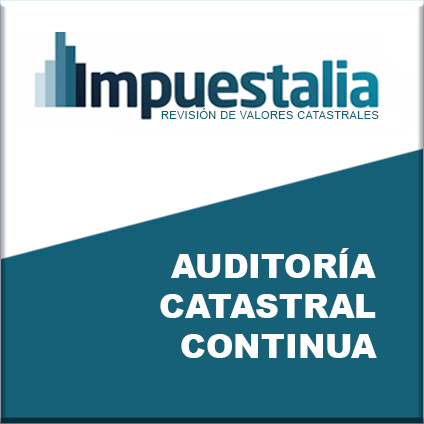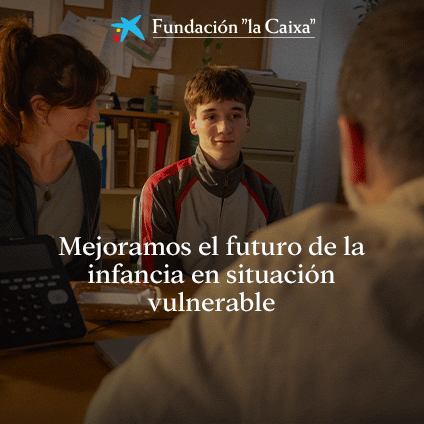Mehmet Baha: psychological safety in practice
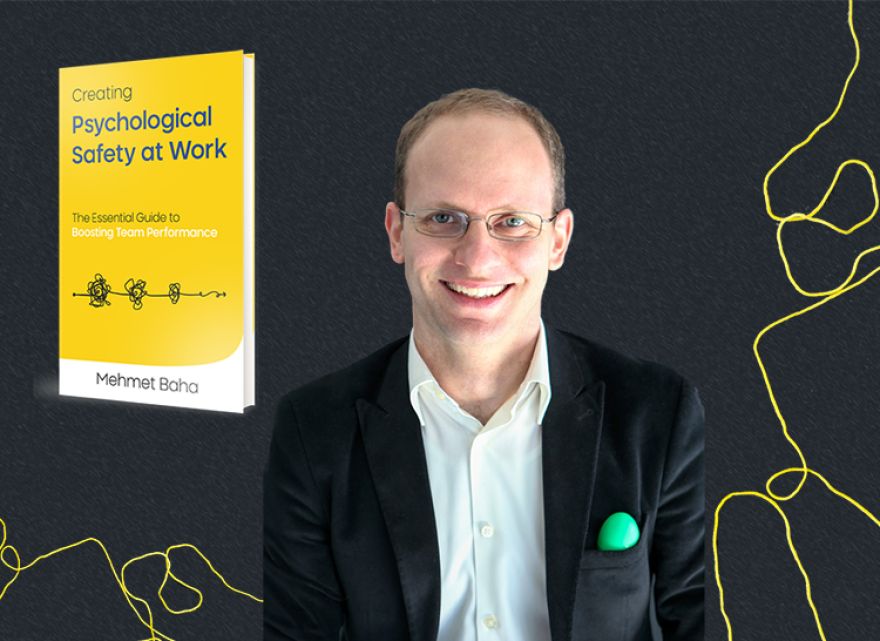
Fascinated since childhood by the idea of helping to change people's lives, Mehmet Baha transferred this interest to the workplace, where he soon realized the importance of a collaborative work culture in companies. With more than twenty five years of professional experience in Germany, Turkey, Ireland, Guatemala and the USA, Baha has just published his second book, Creating Psychological Safety at Work, an eminently practical guide to not only reflect, but also move to action and build psychologically safe workplaces.
EXECUTIVE EXCELLENCE: What signals should a CEO look for to detect a lack of psychological safety in their organization?
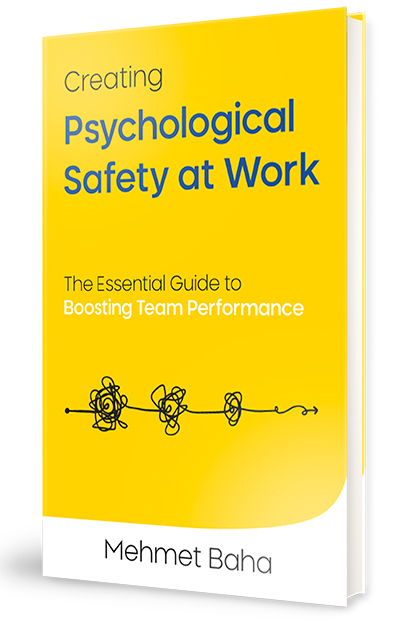 MEHMET BAHA: There are a number of ways that CEOs can detect a lack of psychological safety in their organizations.
MEHMET BAHA: There are a number of ways that CEOs can detect a lack of psychological safety in their organizations.
Lack of autonomy: If managers/leaders tend to make all decisions and not give autonomy to employees, that can be an indication of low level of psychological safety at work where employees do not feel safe to share their ideas, concerns and mistakes.
Silence in team meetings: In many organizations, employees prefer to keep silent rather than offer ideas, challenge ways of working or report misconduct. They do so to protect themselves from any negative consequences (e.g. losing a job, getting punished) of speaking up.
Listening vs. talking: When a CEO dominates team or one-on-one meetings, it means that they give less space to employees to express their ideas, concerns and questions.
Questions asked by CEOs: “Do you have any questions?” is a typical example which does not help foster psychological safety. It is likely that employees stay silent upon hearing that question.
Mainly negative feedback: Focusing on sharing only critical feedback and what is missing can damage psychological safety at work. Employees are likely to perceive it as a toxic workplace and not feel safe to share their concerns and mistakes at work.
Questions like “Who thinks differently on the topic?” can help leaders encourage dissenting views in meetings After detecting these signals, CEOs can work towards creating a workplace where leaders/managers give autonomy to employees. Also, leaders/managers can encourage dissenting views in meetings by asking, “Who thinks differently on the topic?” and appreciating those who express such opinions. Additionally, leaders need to listen more than they speak in meetings and give space to others to share their perspectives. Lastly, high performing teams have a ratio of 3 to 5 positive feedback for every negative feedback, based on the research of John Gottmans and Prof Barbara Fredrickson. We cannot achieve excellence by correcting mistakes. We as human beings grow the most under positive light. Therefore, leaders need to ensure a work environment where employees appreciate one another.
E.E.: Psychological safety has a critical impact on many aspects, one of which is mental health. In this regard, entrepreneur Peter Sims, in a conversation with Amy Edmondson, pointed to a shift in trend thanks to the new generations, "accustomed to integrating mental health issues into their vocabulary. The change is being driven by family and culture, not by corporations. We are witnessing an unstoppable movement," he said. Do you agree? Do you perceive a generational difference in how the importance of psychological safety is valued in organizations?
M.B.: Yes, it seems like an unstoppable movement. The new generations especially Gen Z (18-26 year olds) and Millennials (27-42 year olds) are more conscious of mental health than the previous generations.
On July 27, 2021 Simone Biles, a leading gymnast, withdrew from the Tokyo Olympics to prioritize her mental health. Also, Naomi Osaka, a tennis star from the US, took a mental health break from tennis in 2021.
In companies, I notice that Gen Z especially are more likely to take mental health breaks in times of heightened stress or crisis.
Gen Z especially are more likely to take mental health breaks in times of heightened stress or crisis
What makes the Gen Z unique is, in the absence of psychological safety at work, they are far more likely than other generations to protest online or do whistleblowing, according to 2023 Edelman Trust Barometer. Especially, Gen Z is more involved in societal issues and prefers to work in organizations with a positive influence on the world, as highlighted by the 2023 Edelman Trust Barometer.
It is important to create space for all employees, Gen Z and other generations, to bring their best ideas and to express their concerns at work. By listening to them and finding solutions, we can improve our workplaces.
E.E.: With the rise of remote and hybrid work, what strategies would you recommend to maintain psychological safety among teams that are not physically present?
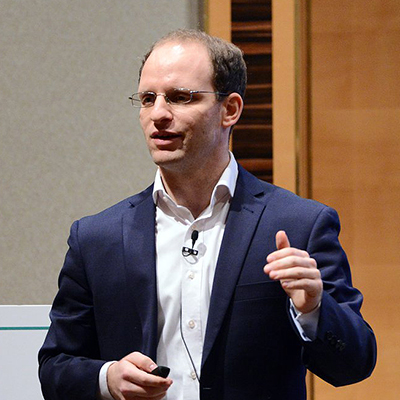 M.B.: In comparison to before Covid, there are more teams working remotely or in a hybrid manner. Many organizations are concerned about maintaining the high performance and psychological safety of such teams. Here are some ideas to foster psychological safety among remote team members.
M.B.: In comparison to before Covid, there are more teams working remotely or in a hybrid manner. Many organizations are concerned about maintaining the high performance and psychological safety of such teams. Here are some ideas to foster psychological safety among remote team members.
1. Team meetings: Getting to know one another contributes to creating trust which has a positive effect on psychological safety. Often, I see leaders/managers having team meetings where they immediately jump to business topics. This indicates that the business and not the employees is always the main focus.
A better approach is to start team meetings with short ice breakers where each team member briefly answers a question, e.g. What is your favourite business podcast? What is your favourite Netflix movie? What is the best thing that happened to you this week? Such questions help boost a sense of connection among team members which is crucial for psychological safety.Often, leaders/managers have remote team meetings where they immediately jump to business topics, instead of starting with questions that help boost a sense of connection among team members which is crucial for psychological safety
2. One-on-ones: Research by Marcus Buckingham shows that to create high-performing teams, leaders/managers need to have weekly one-on-ones with their team members. My previous experience working at some of the world’s best companies proves this. One-on-ones are great opportunities to create space for employees to express their questions, concerns, and ideas. Gallup’s latest report, State of the Global Workplace indicates that a significant portion of employees feel stressed. It is vital that we start such conversations asking our team members, “How are you today?” and to listen to them with an intention to help. If our team members feel safe to express their concerns, we can find ways to support them and minimize the possibility of employee burnout.
3. Face-to-face interaction: Remote working provides employees with many benefits such as saved time and costs from commuting. To enhance the performance of remote teams, we can organize a face-to-face team interaction let’s say once a quarter. All the team members meet face-to-face, work, have a lunch together and team building activity. Such activities can increase the sense of belonging of employees. The key is to ensure that the tools are easy to use to encourage employees to share their ideas freely
4. Right tools: Psychologically safe teams feel safe to share their ideas at work. To enable that, we need to have the right tools that make it easy for employees to do so. Previously, I worked at a leading global company where we had an online tool called “Ideas”. All the employees were encouraged to share any idea they had that could improve the success of the organization. The tool “Ideas” was full of interesting suggestions. Leaders from different teams such as R&D were regularly monitoring the tool and choosing the relevant ones to work on. The key is to ensure that the tools are easy to use to encourage employees to share their ideas freely.
E.E.: How can psychological safety be measured in team collaboration?
M.B.: Yes, this is a question I get often from companies. To see any progress, we want to first measure it. Prof. Amy Edmondson in her book “The Fearless Organization” includes a survey with seven statements. You can see them below.
To assess the level of psychological safety in your team, your team members can rate each of the following statements either as strongly agree, agree, neutral, disagree, or strongly disagree.
- “If you make a mistake on this team, it is not held against you.
- Members of this team are able to bring up problems and tough issues.
- People on this team sometimes accept others for being different.
- It is safe to take a risk on this team.
- It is not difficult to ask other members of this team for help.
- No one on this team would deliberately act in a way that undermines my efforts.
- Working with members of this team, my unique skills and talents are valued and utilized”.
This survey can be done anonymously so that all employees can share their answers without any fear of retaliation.
My recommendation would be first to measure the level of psychological safety in teams, then do a series of learning sessions including coaching over a period of 6-8 months. Make sure to include different levels of manager in those learning journeys. After that measure again the level of psychological safety, there should be an improvement assuming that participants implement their learnings and your organization supports employees’ efforts.
E.E.: You speak of implementing psychological safety from a holistic approach that involves the head, heart, and hands (concrete actions). Which of these three aspects carries more weight when it comes to creating psychologically safe work environments?
M.B.: Head, heart and hands is an approach I use in training teams on the topic of psychological safety.
Head is about learning the concept of psychological safety and its different components including humility, curiosity, dealing with mistakes, asking for feedback, among others. It is about cognition.
Heart concerns touching participants emotionally. Cognition alone is not enough. We need to inspire participants, colleagues and our team members by showing them great examples from other leaders and organizations.Cognition alone is not enough. We need to inspire participants emotionally
Hands mean applying the learned approaches and tools. Without action, we cannot make an impact.
During and after learning sessions on psychological safety, it is equally important to consider head, heart, and hands. In the future, the heart will be increasingly more important. AI tools will more and more provide the head part sharing some information and giving suggestions on the hands/the implementation part.In the near future, we as human beings will not be able to compete with AI on intelligence quotient. What will make us unique will be our own human connection. How authentic we are and how we show warmth, empathy and compassion will be crucial
John Sanei, a leading futurist, states that AI doubles intelligence every 6 months. AI can have an IQ of 1,000 to 1,500 in a couple of years, that is 10x the intelligence of most clever people (such as Einstein with an IQ of 161). In the near future, we as human beings will not be able to compete with AI on intelligence quotient (IQ). What will make us unique will be our own human connection. How authentic we are and how we show warmth, empathy and compassion will be crucial.
E.E.: Years ago, you were one of the first employees of Facebook in Europe. Currently, the controversies surrounding large tech companies are numerous and varied in nature. Specifically, in the case of Meta, regarding the psychological safety of its employees, the most flagrant cases revolve around the moderators of "problematic" content. It is a delicate and complex issue, but what could Meta do to ensure greater well-being for these employees?
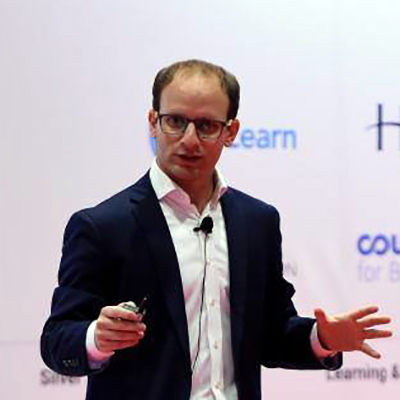 M.B.: Yes, I worked at Facebook from 2009 to 2014. At that time, Facebook (now Meta) had a very high level of psychological safety. The company had won repeatedly the best place to work awards and was growing exponentially. Working there was a special experience.
M.B.: Yes, I worked at Facebook from 2009 to 2014. At that time, Facebook (now Meta) had a very high level of psychological safety. The company had won repeatedly the best place to work awards and was growing exponentially. Working there was a special experience.
Unfortunately, the situation is different in the company which has gone through data privacy scandals and controversies around content moderation among other issues.
Currently, well-being is an important issue not only at Meta and tech companies but also other organizations worldwide. The “Gallup State of the Global Workplace: 2024 Report” makes the point that employees’ wellbeing has been deteriorating globally. Feelings of stress, anger, sadness, anxiety or worry are currently at the highest levels in the last 10 years.
Typically, companies offer mindfulness, wellbeing apps and counselling sessions which are important but not enough. Typically, companies offer mindfulness, wellbeing apps and counselling sessions which are important but not enough to improve employee well-being
To improve the well-being of employees, Meta and other organizations could consider doing the following:
- Improve management/leadership skills: Ensure that managers/leaders support employees to grow and also to take care of themselves physically, emotionally and socially.
- Reasonable workload: Ensure that the workload does not negatively affect employees' wellbeing to the extent that they have distress, anxiety, depression or burnout. It is the role of managers/leaders here to ensure that the workload is reasonable.
- Remove the stigma on mental health. Here leaders/managers play a crucial role. When senior leaders of an organization talk about their own challenges on mental health or resilience, it allows employees to accept their own challenges and an organization can find ways to improve employee well-being in a systematic way, instead of just putting a band aid.
E.E.: What are the main components of scaling psychological safety at an organization level?
M.B.: To create a psychologically safe workplace, organisations need to consider the three aspects of an organisation: culture, power and strategic design.
Culture is about the values, mindsets and behaviours of employees. Previously, I worked at a leading global company where one of the company values was “Be open.” It meant being open in giving and receiving feedback and ensuring clear communication. That value is related to psychological safety.
All the way from recruitment to internal communications to performance management and promotions, the company values were repeated and employees were encouraged to embrace them. For instance, we asked potential employees questions to see to what extent they had the value of “be open.”Performance was also evaluated on the basis of company values. To foster and maintain psychological safety, employees need to apply the values related to psychological safety.To create a psychologically safe workplace, organisations need to consider the three aspects of an organisation: culture, power and strategic design
Power concerns managers and leaders who play a crucial role in fostering psychological safety at work. Managers/leaders need to understand how to deal with mistakes, give autonomy to employees, show humility, proactively ask for feedback, foster a sense of belonging and encourage dissenting views.
Strategic design includes processes, systems and tools in an organisation. To build psychological safety, it is crucial to have the right processes, systems and tools. This way, employees can collaborate well, share information with one another fast, appreciate their colleagues and bring out their ideas, concerns and questions. For instance, having regular town halls where employees are encouraged to express any questions and concerns they have and even to share their dissenting views is important.
E.E.: Improving psychological safety involves change. What is important to ensure that the change initiative can be successful?
M.B.: Senior managers in particular play an essential role in this change. At the same time, it is the role of all employees to contribute to psychological safety. To drive change efforts successfully, we can use the movers-movables-immovables approach created by Jason Little.
Movers are employees who are excited about a change (i.e. to improve the level of psychological safety at work) and are committed to working towards it. Movables are employees who think “Here’s another change initiative. Let’s wait and see if this will work.” They are neutral. Immovables are employees who actively resist the change and want to maintain the status quo.Instead of focusing our attention on immovables, we need to start identifying the movers and work with them to achieve small wins
Instead of focusing our attention on immovables, we need to start identifying the movers and work with them to achieve small wins. We can then present the small wins to other employees and convince the movables. This way, movables can become movers and we gain more supporters. We need to understand the needs and perspectives of immovables.
Lastly, it is important to involve employees in the change process. Recently I helped a global company improve its level of psychological safety at work. One of the key aspects of this success was involving employees in creating ideas and owning them in order to ensure psychological safety at work.
E.E.: Both Amy Edmondson and Daniel Pink highlight the practicality of your book Creating Psychological Safety at Work. What will readers find in this book?
M.B.: I feel grateful to get both Amy Edmonson and Daniel Pink’s testimonials. Their work has inspired me immensely as I wrote the book “Creating Psychological Safety at Work.” The book “Creating Psychological Safety at Work" is a concise guide which is based on 16-32-64. It means that it includes 16 inspiring organizational examples from four continents, 32 practical tools and approaches you use immediately and 64 thought-provoking questions to help you create your psychological safety strategy and action plans
The book is a concise guide which is based on 16-32-64. It means that it includes 16 inspiring organizational examples from four continents, 32 practical tools and approaches you use immediately and 64 thought-provoking questions to help you create your psychological safety strategy and action plans. This structure makes it a unique book.
Mehmet Baha, author of “Creating Psychological Safety at Work“ and "Playbook for Engaged Employees”. Founder & Senior Consultant at Solution Folder.
Interview published in 2024.
You can read this interview in Spanish here. / Puedes leer esta entrevista en español aquí.
Últimos artículos


